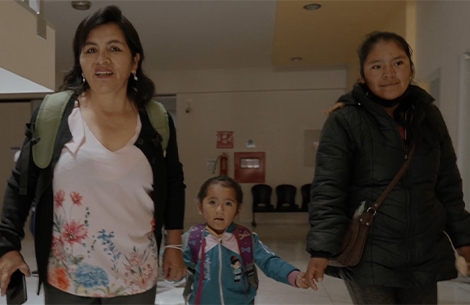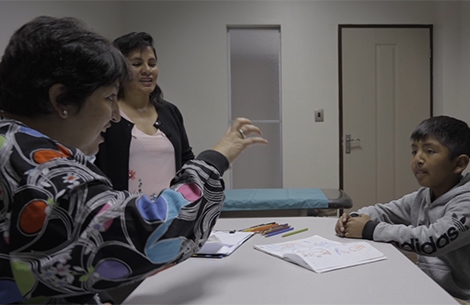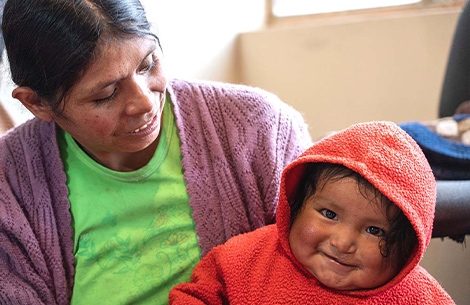Dr. Telma Carnicer Sets Teeth — and Misconceptions — Straight
It takes so much more than a surgery to heal a cleft
It’s one of the most widespread myths of cleft care: “One surgery is all a child with a cleft needs to smile.”
In fact, however, even after surgery, many children with clefts have missing, extra, or decaying teeth, making it impossible for them to confidently share their smiles with the world.
That’s why Smile Train supports the vital work of specialists like Dr. Telma Gabriela Carnicer Leaño, a pediatric dentist at our partner Fundación Ayninakuna in Bolivia.
“My role is very important to me because clefts encompass children’s entire mouths,” she explained. “I think it is important that children have good oral health so that they don’t have problems in the future.”
And just like teeth in the mouth, children with clefts never hurt in isolation. Their mothers and fathers so often arrive at Ayninakuna in a state of panic, afraid their child will spend their whole lives homebound, struggling to eat, breathe, speak, and make friends — all while feeling alone and stigmatized themselves. So Telma and her colleagues’ work always involves getting parents involved in their child’s cleft journey, too, because, in truth, it’s also their own.
My patients “really need a lot of support from their parents, they need a lot of courage, and for that they have both me and the other professionals, who are there to support them so they don’t feel alone and they will have a lot of encouragement,” she said.
Telma and her team also put to rest another widespread cleft care myth: “Doctors flying in from other countries on short-term missions can provide the same level of cleft care as local providers, if not better.”
In fact, by investing in local cleft care, Smile Train makes multi-disciplinary, world-class cleft treatment available 24/7 to all in need and gives children who have too often known bullying and isolation friends and role models who speak their language, share their culture, and who they can rest assured will still be there for them tomorrow, next month, and for generations to come.
In just 25 years, this local-first model has powered us to become the world’s largest cleft organization, sponsoring more than two million life-changing cleft surgeries in 95+ countries and contributing $69 billion to the global economy.
And Telma is quick to point out another, unexpected, way she’s seen Smile Train’s model bust myths: With men almost always working during the day in Bolivia, it typically falls to patients’ mothers and sisters to take them to their appointments. When these women see that their child’s dentist — and almost every other member of their cleft team — is a woman, too, “it gives them more confidence, even when I tell them I am a mother. It is really beautiful that Smile Train can support women; there is no better way to feel more empowered. There is no better support than to be able to make this world a better world.”
Read more stories for Cleft Awareness Month

Elsa Heals Clefts by Healing Families
Inside the work of a Smile Train-partner social worker

Ingrid Rios Makes Cleft Care Fun
She learned it all from her daughter

Setting the Standard for Cleft Treatment in Bolivia and Beyond
At Fundación Ayninakuna, doctors and staff are committed to patients and families for the long haul
“What I like most is to see a child smiling and telling me that I made him happy. Telling me thank you for the help I was able to give him, which may not be much. I like to see them happy and healthy above all.”
You can change the world with a smile today.
